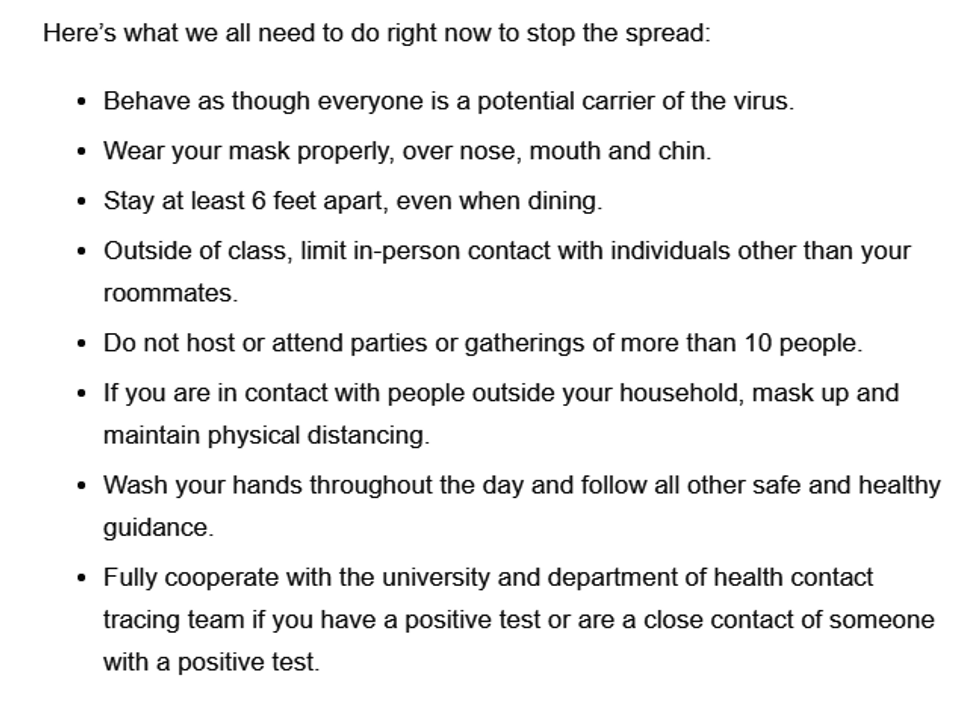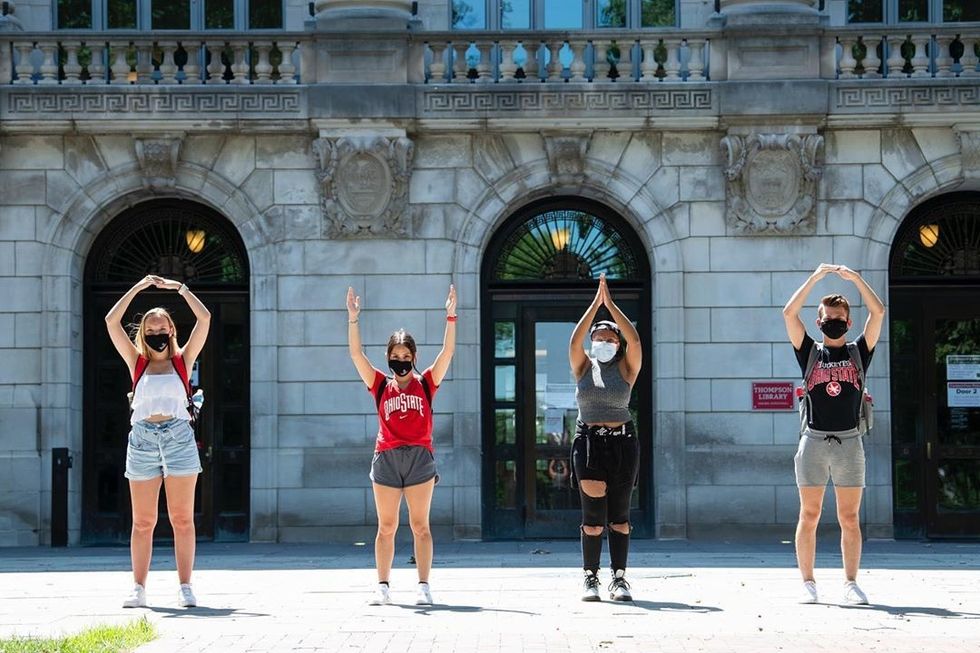President-elect Kristina M. Johnson of The Ohio State University sent out a university-wide email at 6:58 p.m., August 27, to share information regarding the latest data from the university's COVID-19 testing program.
On Tuesday, August 25, the first day of classes, the university reported a 1.16 percent positivity rate among students. Johnson's email states that over "... the last 24 hours, we have seen the student positivity rate rise to 3.1 percent. But it's not just the positivity rate that is of concern; it's also the rate of transmission. If we want to continue to stay on campus, we have to prevent the spread of the virus."
The email does not explicitly state what the rate of transmission is.
The situation seems obvious: the university has brought thousands of people onto our Columbus campus, and despite the measures that have been put in place, we have lost control of the spread COVID-19.
After a weekend filled with large crowds and parties (which I watched, terrified, from my apartment window with my roommate all weekend long), it is only probable that cases will continue to rise.
Regardless of the parties and large crowds, however, there are simply too many people on campus, and too many of them are not following CDC guidelines.
In the roughly two weeks that I have been on campus, I have seen people (whether they are students, faculty, or staff is sometimes hard to tell) not wearing a mask in my apartment building, on the campus sidewalks, on High Street, in the Ohio Union, on the Oval, and at Mirror Lake, to name a few. Needless to say, I don't leave my apartment anymore unless it's absolutely necessary.
Perhaps that is why President-elect Johnson's email feels empty. In order to improve the situation on campus, she writes:

All of these recommendations and guidelines have been stated multiple times in previous university communications.
Essentially, the university is making no additional efforts to slow the spread of COVID-19 on campus despite the alarming numbers from the last few days.
Rather, they are again placing the sole responsibility on students, faculty, and staff to contain the virus. This is problematic for several reasons. Most importantly, President-elect Johnson's email indicates that she (as well as the rest of upper-level administration, most likely) cares more about keeping campus open than keeping students safe. If we have evidence of some 200-plus confirmed COVID-19 cases on campus, why should we continue to send students to in-person classes? Why should we continue to require university employees to come to work? I was fortunate enough to be able to switch to all distanced learning courses, but many of my acquaintances and friends were not able to do so because of graduation requirements, pre-requisite requirements, and many other factors.
With an increase of almost two full percentage points in just 24 hours, it is outrageous to me that the university is not taking any measure to further improve the safety of Ohio State students, faculty, and staff.

Johnson closes her email by imploring us to "double down on our efforts" to stay safe and "Take care of each other," but there is no substance to this request.
Why isn't there anyone on campus grounds or in campus buildings monitoring and enforcing mask-usage or social distancing?
Why isn't there anyone making sure building capacity limits are being met?
The problem here is clear: Up until this point, the university has relied solely on the assumption that individuals will follow the rules they set. The primary mechanism of enforcing these rules has been to threaten student conduct cases upon students who go to on or off-campus parties, and even though this has proven to be an ineffective strategy as per the new data, they are not making any quantifiable measures to ramp up safety procedures even after a significant increase in the COVID-19 positivity rate.
If "we" are being asked to double down on our efforts to stay safe, why isn't Ohio State University's administration doubling down on their efforts to keep us safe?








 The minimum wage is not a living wage.
StableDiffusion
The minimum wage is not a living wage.
StableDiffusion
 influential nations
StableDiffusion
influential nations
StableDiffusion












